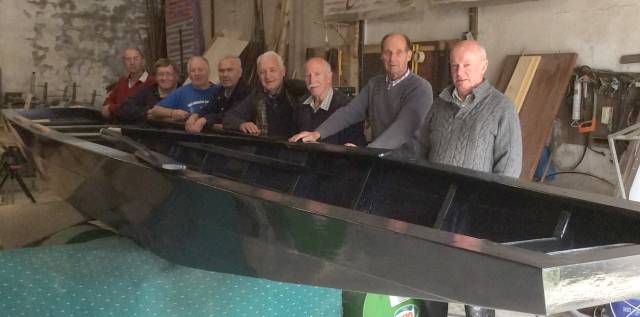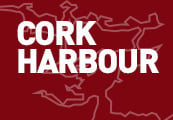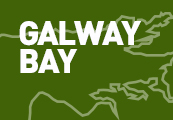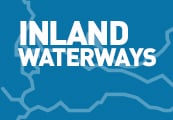In early 2015 a number of Fermanagh people, some whose families go back for generations working and living on and around Lough Erne, were brought together to discuss their concerns that the history and heritage of wooden boat building on and around Lough Erne had all but disappeared writes Fred Ternan of Lough Erne Heritage.
All of the people in attendance had direct connections with wooden boat building on Lough Erne and in Fermanagh. Many more have joined since.
It was discussed and agreed that since the last wooden boats were built about 1970 much work would need to be done to retain what information was left and that this research would need to be done very soon. It was agreed that a community group calling itself Lough Erne Heritage would be formed with a constitution and trustees and whose aims would be to promote and preserve the history and heritage of wooden boat on and around the entire River Erne from its source in County Cavan, through Fermanagh to its estuary in Donegal and would focus on the people who built and used them.
Work would concentrate mainly on the traditional boats, the log boat (coite) or dugout canoe, the Lough Erne Cot and the traditional Lough Erne Clinker built rowing boat. All information gathered and confirmed on other significant boats brought to or built on the lough would also be saved, the emphasis again on who built and used them. Since almost all of those boats have disappeared efforts would be made to find drawings etc and save these.
All information gathered so far has been saved centrally and when we set up our website will be shared with all. Displays, exhibitions and talks have been held with more to come and much information has been gained as a result.
Work has already begun on building examples of the traditional boats with one of two Lough Erne Cots almost ready to be launched. Two identical Lough Erne Cots are being built with the intention of reintroducing Cot Racing to the lough. These were very serious contests carried out in a number of places around the lough in the 1800s. So serious indeed, legend has it that on at least one occasion, a competitor's cot was sabotaged the night before the event. This took place on his island on the shore not far from the house. Notices for such cot races are held showing the courses to be rowed and after the launch of the two cots in August racing will commence.
Relationships have been formed with other like minded groups and it is hoped to extend this throughout Ireland. The first traditional boat, the hollowed out tree trunk, log boat or dugout has been found in many places throughout Ireland with some dated carbon dated to between three and four thousand years BC. Many local cots are descended from such craft. With this common denominator shared by all groups preserving and developing an interest their local traditional boat, it is hoped that arrangements eventually be put in place to display traditional boats at venues rotated around Ireland.
The Lough Erne Cot is unique to the Erne System and ranged in size from about 12 feet in length to quite massive cots 55feet long. With the lough being heavily populated around the shore and on the islands, quite unique in itself, the smaller cots were used for getting about, doing the shopping for instance. The larger cots were used for transport and as ferries, bridges were a fairly recent addition to the lough. Many of the large cots transported stone to build the houses and towns and turf to fuel them. There was continuous traffic along the length of the lough transporting sand turf and freight brought into the port of Ballyshannon. The freight from Ballyshannon was transported overland to Belleek where it was put on cots and shipped to Enniskillen and various other parts of the lough and Fermanagh.
On the journeys along the larger Lower Lough sails were often used to ease the workload of the two man crew.
It's not surprising that the regular regattas were an eagerly anticipated attraction and a way of forgetting for a day the very hard work of earning a living from the lough. The planned re-introduction of cot racing will be a means whereby the efforts of those in the past, using Lough Erne Cots to help build and develop the area can be remembered.
Recently, i.e, in the last 50 years, Lough Erne Cots were used to transport cattle up until the late 1980s, the last cot used for this being able to carry 12 to 14 cattle at a time.
Transport on the lough is now done by steel ferries some of whom resemble the shape of a Lough Erne Cot.
Whilst work is continuing on building two 22 feet long Lough Erne Cots other events are being planned. An Art and Photographic exhibition is being organised for the 28th, 29th and 30th of July in Enniskillen Library, the theme being Lough Erne and its Wooden Boats. This follows a successful display about wooden boat building held there last year. Along with the exhibition a number of traditional wooden boats will be on display outside the library on Saturday the 30th of July including one of the recently built Lough Erne Cots.
Lough Erne Heritage owns, has access to and the use of a substantial amount of boats, artefacts, images and stories including maps showing which islands were occupied and the routes the inhabitants used. Substantial detail on the boat builders of the past is also held and it is hoped to soon have this available to the public.
This will ensure that this interesting but almost forgotten part of the history and heritage of Lough Erne and the surrounding area is brought to the attention of all and preserved for the future.
 The Cot is finished Some of the building team, from left to right – Tommy McMahon, Rowing Club Belturbet – Seamus Connelly, Cavan Men’s Shed – Jonny Brown, Cavan Men’s Shed – Kevin Brady, Cavan Men’s Shed – George Morrissey, Belturbet Community Association, Historian, Author and member of Lough Erne Heritage – Bert Robinson, member of Lough Erne Heritage – Michael Lee, Cavan Men’s Shed – Fred Ternan, Lough Erne Heritage.
Credit: Lough Erne Heritage/Facebook
The Cot is finished Some of the building team, from left to right – Tommy McMahon, Rowing Club Belturbet – Seamus Connelly, Cavan Men’s Shed – Jonny Brown, Cavan Men’s Shed – Kevin Brady, Cavan Men’s Shed – George Morrissey, Belturbet Community Association, Historian, Author and member of Lough Erne Heritage – Bert Robinson, member of Lough Erne Heritage – Michael Lee, Cavan Men’s Shed – Fred Ternan, Lough Erne Heritage.
Credit: Lough Erne Heritage/Facebook
We've got a favour to ask
More people are reading Afloat.ie than ever thanks to the power of the internet but we're in stormy seas because advertising revenues across the media are falling fast. Unlike many news sites, we haven’t put up a paywall because we want to keep our marine journalism open.
Afloat.ie is Ireland's only full–time marine journalism team and it takes time, money and hard work to produce our content.
So you can see why we need to ask for your help.
If everyone chipped in, we can enhance our coverage and our future would be more secure. You can help us through a small donation. Thank you.


























































